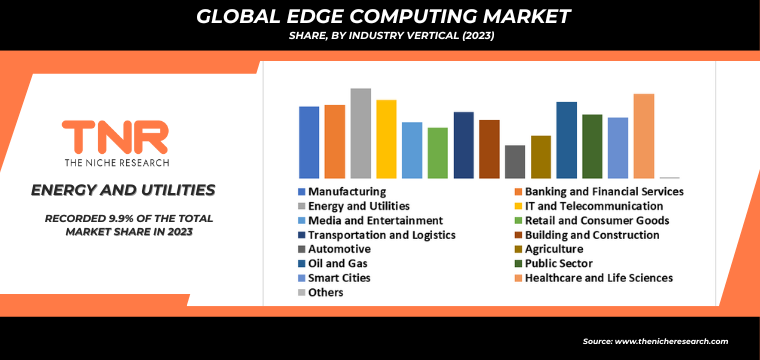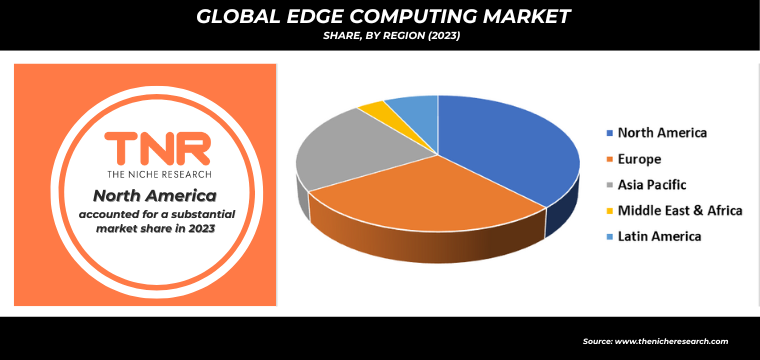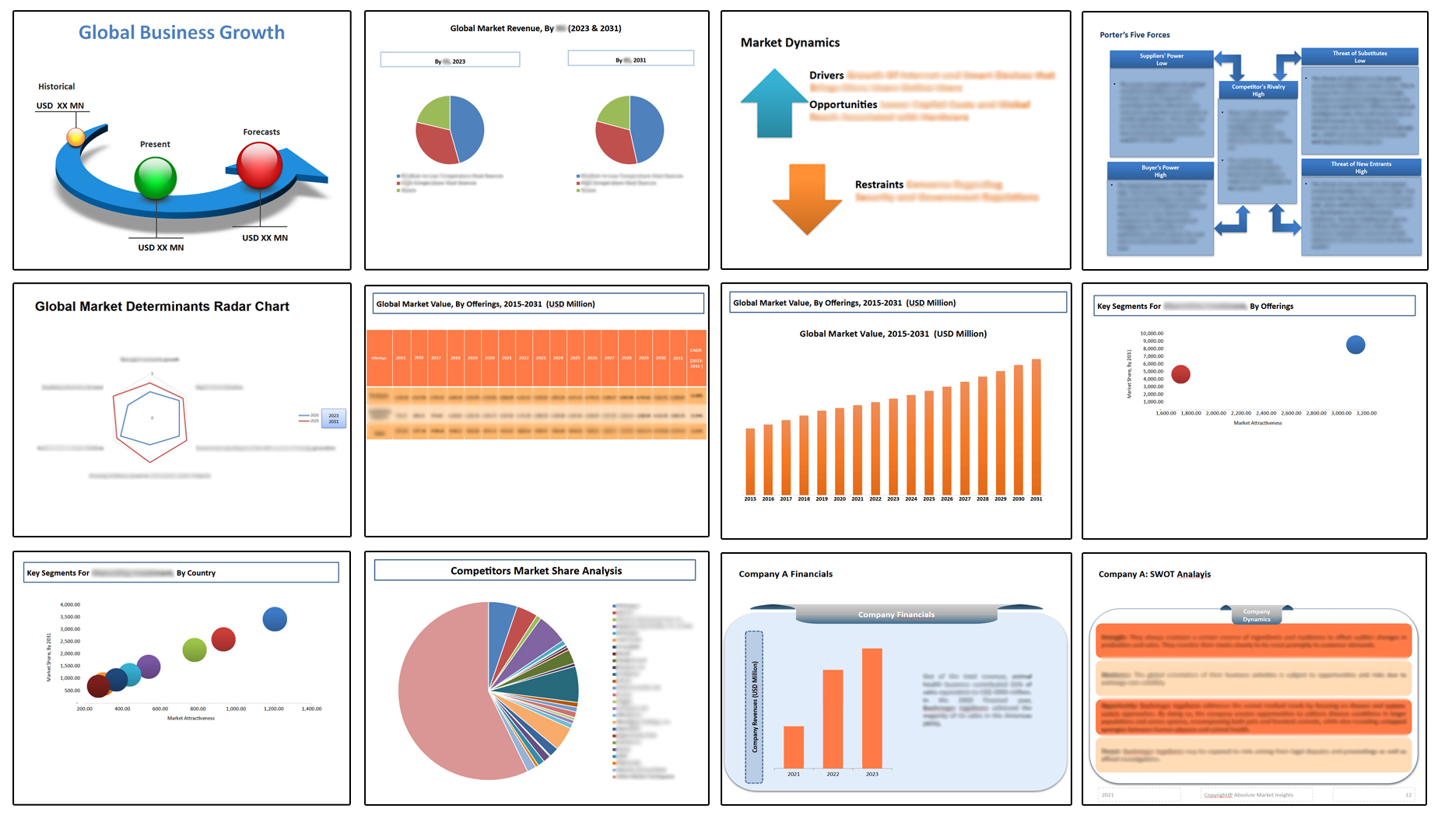Global Edge Computing Market: By Component, By Deployment Type, By Organization size, By Application, By Industry vertical, By Region & Segmental Insights Trends and Forecast, 2024 – 2034
- Industry: Technology
- Report ID: TNR-110-1136
- Number of Pages: 420
- Table/Charts : Yes
- June, 2024
- Base Year : 2024
- No. of Companies : 10+
- No. of Countries : 29
- Views : 10138
- Covid Impact Covered: Yes
- War Impact Covered: Yes
- Formats : PDF, Excel, PPT
Edge computing is a distributed computing paradigm that brings computation and data storage closer to the location where it is needed, typically at the edge of the network near data sources such as sensors, IoT devices, and local servers. Unlike traditional cloud computing, which relies on centralized data centers, edge computing processes data locally, reducing latency and bandwidth usage. This is particularly beneficial for applications requiring real-time responses, such as autonomous vehicles, industrial automation, and healthcare monitoring systems. By handling data locally, edge computing enhances speed, improves data security, and ensures compliance with data sovereignty regulations.
Additionally, it can reduce operational costs by minimizing the need for large-scale data transmission to central servers. Edge computing supports the proliferation of smart technologies and IoT devices, enabling more efficient and responsive systems. As industries increasingly adopt digital transformation initiatives, edge computing is becoming a critical component of modern IT infrastructure, driving innovation and enhancing operational efficiencies.
The demand for edge computing is driven by the increasing need for real-time data processing and low-latency applications in various industries. As the Internet of Things (IoT) and Industrial IoT (IIoT) proliferate, the volume of data generated at the network’s edge grows exponentially, necessitating immediate analysis and response. Industries such as autonomous vehicles, healthcare, and manufacturing require rapid data processing to enhance operational efficiency, safety, and decision-making. Additionally, the deployment of 5G networks amplifies the capabilities of edge computing by providing high-speed, low-latency connectivity, which is crucial for supporting the growing number of edge devices and applications.
privacy and security concerns further drive the demand, as local data processing reduces the risk associated with transmitting sensitive information over long distances. Furthermore, the need for cost-effective solutions to manage bandwidth usage and the increasing adoption of AI and machine learning applications at the edge also fuel the growth of edge computing, making it a vital component of modern technological infrastructure.
In terms of revenue, the global edge computing market was worth US$ 16.5 Bn in 2023, anticipated to witness CAGR of 42.2% during 2024 – 2034.

Global Edge computing Market Dynamics
Technological Advancements: The integration of advanced technologies such as artificial intelligence (AI), machine learning, and the Internet of Things (IoT) has significantly enhanced the capabilities of edge computing. These technologies enable real-time data processing and analytics at the edge, reducing latency and improving efficiency. Processing data at the edge reduces the need for extensive data transmission to central cloud servers, lowering bandwidth usage and associated costs. This cost-efficiency is a key driver for the adoption of edge computing.

5G Deployment: The global rollout of 5G networks is a major catalyst for edge computing. 5G’s high-speed, low-latency connectivity supports the proliferation of edge devices and applications, facilitating faster data processing and more responsive services. Edge computing provides scalable and flexible solutions that can be easily deployed across various environments. This adaptability makes it attractive for businesses looking to enhance their IT infrastructure and improve service delivery.

Data Privacy and Security: Increasing concerns over data privacy and security are driving organizations to adopt edge computing. By processing data locally, edge computing minimizes the risk of data breaches and ensures compliance with data sovereignty regulations. Industries such as healthcare, manufacturing, and autonomous vehicles require real-time data processing to enhance operational efficiency, safety, and decision-making. Edge computing meets these demands by enabling immediate analysis and response.

Hardware Segment has Garnered Major Market Share in the Global Edge computing Market During the Forecast Period (2024 – 2034).
The demand for hardware in edge computing is driven by the need for robust, high-performance devices capable of processing data locally, close to the source of generation. As the adoption of IoT and IIoT expands, industries require powerful edge servers, gateways, and specialized processors to handle real-time data analysis and reduce latency. This need is particularly pronounced in sectors such as manufacturing, healthcare, and autonomous vehicles, where immediate decision-making is crucial for efficiency, safety, and innovation.
Moreover, advancements in AI and machine learning algorithms necessitate sophisticated hardware solutions that can support complex computations at the edge. The growing emphasis on data privacy and security further drives the demand for local processing capabilities, minimizing the risk of data breaches associated with transmitting sensitive information to centralized data centers. Additionally, the proliferation of 5G technology enhances connectivity and bandwidth, enabling more devices to operate at the edge and thus requiring advanced hardware to manage the increased data flow. These factors collectively fuel the robust demand for edge computing hardware in various industries.

By Application Industrial Internet of Things (IIoT) Segment had the Highest Share in the Global Edge Computing Market in 2023.
The demand for edge computing in the Industrial Internet of Things (IIoT) is driven by the need for real-time data processing and enhanced operational efficiency in industrial environments. IIoT applications generate vast amounts of data from sensors, machinery, and equipment, requiring immediate analysis and response to optimize performance, predict maintenance needs, and prevent downtime. Edge computing addresses these needs by enabling data processing at the source, reducing latency and bandwidth usage compared to cloud-based solutions.
This is particularly critical in industries such as manufacturing, energy, and transportation, where milliseconds can make a significant difference in safety and productivity. Furthermore, edge computing enhances data security by keeping sensitive information local, mitigating risks associated with data transmission to centralized data centers. The integration of edge computing with IIoT also supports advanced analytics and machine learning at the edge, facilitating smarter decision-making and more responsive industrial operations. These capabilities collectively drive the increasing adoption of edge computing solutions within the IIoT landscape.

North America, by Region Dominated the Global Edge Computing Market in 2023.
The demand for edge computing in North America is primarily driven by the increasing need for real-time data processing and low-latency applications in various sectors. As industries such as healthcare, automotive, and manufacturing adopt more IoT devices and smart technologies, the volume of data generated at the network edge has surged, necessitating efficient and rapid data processing close to the source.
This is crucial for applications like autonomous vehicles, remote patient monitoring, and industrial automation, where delays can significantly impact performance and safety. Additionally, the rise of 5G technology further propels the adoption of edge computing by enabling faster and more reliable connectivity, which enhances the performance of edge devices and applications. Moreover, data privacy and security concerns drive the demand for edge computing, as processing data locally reduces the risks associated with transmitting sensitive information over long distances. These factors, combined with the need for efficient bandwidth usage and enhanced user experiences, significantly boost the demand for edge computing solutions in North America.

Competitive Landscape: Global Edge Computing Market:
- Amazon Web Services (Aws)
- Cisco Systems
- Dell Technologies
- Foghorn Systems
- Google LLC
- Hewlett Packard Enterprise (HPE)
- Huawei Technologies co., ltd.
- IBM Corporation
- Intel Corporation
- Microsoft Corporation
- Nokia Corporation
- Other Industry Participants
Global Edge Computing Market Scope
| Report Specifications | Details |
| Market Revenue in 2023 | US$ 16.5 Bn |
| Market Size Forecast by 2034 | US$ 793.2 Bn |
| Growth Rate (CAGR) | 42.2% |
| Historic Data | 2016 – 2022 |
| Base Year for Estimation | 2023 |
| Forecast Period | 2024 – 2034 |
| Report Inclusions | Market Size & Estimates, Market Dynamics, Competitive Scenario, Trends, Growth Factors, Market Determinants, Key Investment Segmentation, Product/Service/Solutions Benchmarking |
| Segments Covered | By Component, By Deployment Type, By Organization size, By Application, By Industry vertical, By Region |
| Regions Covered | North America, Europe, Asia Pacific, Middle East & Africa, Latin America |
| Countries Covered | U.S., Canada, Mexico, Rest of North America, France, The UK, Spain, Germany, Italy, Nordic Countries (Denmark, Finland, Iceland, Sweden, Norway), Benelux Union (Belgium, The Netherlands, Luxembourg), Rest of Europe, China, Japan, India, New Zealand, Australia, South Korea, Southeast Asia (Indonesia, Thailand, Malaysia, Singapore, Rest of Southeast Asia), Rest of Asia Pacific, Saudi Arabia, UAE, Egypt, Kuwait, South Africa, Rest of Middle East & Africa, Brazil, Argentina, Rest of Latin America |
| Key Players | Amazon Web Services (Aws), Cisco Systems, Dell Technologies, Foghorn Systems, Google LLC, Hewlett Packard Enterprise (HPE), Huawei Technologies co., ltd., IBM Corporation, Intel Corporation, Microsoft Corporation, Nokia Corporation |
| Customization Scope | Customization allows for the inclusion/modification of content pertaining to geographical regions, countries, and specific market segments. |
| Pricing & Procurement Options | Explore purchase options tailored to your specific research requirements |
| Contact Details | Consult With Our Expert
Japan (Toll-Free): +81 663-386-8111 South Korea (Toll-Free): +82-808- 703-126 Saudi Arabia (Toll-Free): +966 800-850-1643 United Kingdom: +44 753-710-5080 United States: +1 302-232-5106 E-mail: askanexpert@thenicheresearch.com
|
Global Edge Computing Market
By Component
- Hardware
- Processors
- Sensors
- Gateways and Servers
- uCPE
- Others
- Software
- Services
By Deployment Type
- On-Premise
- Cloud
By Organization Size
- Small and Medium Size Organizations
- Large Organizations
By Application
- Industrial Internet of Things (IIoT)
- Image and Video Analytics
- Facial Recognition
- Artificial Intelligence (AI)
- Threats and Attacks Detection
- Content Delivery
- Remote Monitoring
- Traffic Management
- Storage and networking
- Others
By Industry Vertical
- Manufacturing
- Banking and Financial Services
- Energy and Utilities
- IT and Telecommunication
- Media and Entertainment
- Retail and Consumer Goods
- Transportation and Logistics
- Building and Construction
- Automotive
- Agriculture
- Oil and Gas
- Public Sector
- Smart Cities
- Healthcare and Life Sciences
- Others
By Region
- North America (U.S., Canada, Mexico, Rest of North America)
- Europe (France, The UK, Spain, Germany, Italy, Nordic Countries (Denmark, Finland, Iceland, Sweden, Norway), Benelux Union (Belgium, The Netherlands, Luxembourg), Rest of Europe)
- Asia Pacific (China, Japan, India, New Zealand, Australia, South Korea, Southeast Asia (Indonesia, Thailand, Malaysia, Singapore, Rest of Southeast Asia), Rest of Asia Pacific)
- Middle East & Africa (Saudi Arabia, UAE, Egypt, Kuwait, South Africa, Rest of Middle East & Africa)
- Latin America (Brazil, Argentina, Rest of Latin America)
Report Layout:

Table of Contents
Note: This ToC is tentative and can be changed according to the research study conducted during the course of report completion.
**Exclusive for Multi-User and Enterprise User.
Global Edge Computing Market
By Component
- Hardware
- Processors
- Sensors
- Gateways and Servers
- uCPE
- Others
- Software
- Services
By Deployment Type
- On-Premise
- Cloud
By Organization Size
- Small and Medium Size Organizations
- Large Organizations
By Application
- Industrial Internet of Things (IIoT)
- Image and Video Analytics
- Facial Recognition
- Artificial Intelligence (AI)
- Threats and Attacks Detection
- Content Delivery
- Remote Monitoring
- Traffic Management
- Storage and networking
- Others
By Industry Vertical
- Manufacturing
- Banking and Financial Services
- Energy and Utilities
- IT and Telecommunication
- Media and Entertainment
- Retail and Consumer Goods
- Transportation and Logistics
- Building and Construction
- Automotive
- Agriculture
- Oil and Gas
- Public Sector
- Smart Cities
- Healthcare and Life Sciences
- Others
By Region
- North America (U.S., Canada, Mexico, Rest of North America)
- Europe (France, The UK, Spain, Germany, Italy, Nordic Countries (Denmark, Finland, Iceland, Sweden, Norway), Benelux Union (Belgium, The Netherlands, Luxembourg), Rest of Europe)
- Asia Pacific (China, Japan, India, New Zealand, Australia, South Korea, Southeast Asia (Indonesia, Thailand, Malaysia, Singapore, Rest of Southeast Asia), Rest of Asia Pacific)
- Middle East & Africa (Saudi Arabia, UAE, Egypt, Kuwait, South Africa, Rest of Middle East & Africa)
- Latin America (Brazil, Argentina, Rest of Latin America)
The Niche Research approach encompasses both primary and secondary research methods to provide comprehensive insights. While primary research is the cornerstone of our studies, we also incorporate secondary research sources such as company annual reports, premium industry databases, press releases, industry journals, and white papers.
Within our primary research, we actively engage with various industry stakeholders, conducting paid interviews and surveys. Our meticulous analysis extends to every market participant in major countries, allowing us to thoroughly examine their portfolios, calculate market shares, and segment revenues.
Our data collection primarily focuses on individual countries within our research scope, enabling us to estimate regional market sizes. Typically, we employ a bottom-up approach, meticulously tracking trends in different countries. We analyze growth drivers, constraints, technological innovations, and opportunities for each country, ultimately arriving at regional figures.Our process begins by examining the growth prospects of each country. Building upon these insights, we project growth and trends for the entire region. Finally, we utilize our proprietary model to refine estimations and forecasts.
Our data validation standards are integral to ensuring the reliability and accuracy of our research findings. Here’s a breakdown of our data validation processes and the stakeholders we engage with during our primary research:
- Supply Side Analysis: We initiate a supply side analysis by directly contacting market participants, through telephonic interviews and questionnaires containing both open-ended and close-ended questions. We gather information on their portfolios, segment revenues, developments, and growth strategies.
- Demand Side Analysis: To gain insights into adoption trends and consumer preferences, we reach out to target customers and users (non-vendors). This information forms a vital part of the qualitative analysis section of our reports, covering market dynamics, adoption trends, consumer behavior, spending patterns, and other related aspects.
- Consultant Insights: We tap into the expertise of our partner consultants from around the world to obtain their unique viewpoints and perspectives. Their insights contribute to a well-rounded understanding of the markets under investigation.
- In-House Validation: To ensure data accuracy and reliability, we conduct cross-validation of data points and information through our in-house team of consultants and utilize advanced data modeling tools for thorough verification.
The forecasts we provide are based on a comprehensive assessment of various factors, including:
- Market Trends and Past Performance (Last Five Years): We accurately analyze market trends and performance data from preceding five years to identify historical patterns and understand the market’s evolution.
- Historical Performance and Growth of Market Participants: We assess the historical performance and growth trajectories of key market participants. This analysis provides insights into the competitive landscape and individual company strategies.
- Market Determinants Impact Analysis (Next Eight Years): We conduct a rigorous analysis of the factors that are projected to influence the market over the next eight years. This includes assessing both internal and external determinants that can shape market dynamics.
- Drivers and Challenges for the Forecast Period:Identify the factors expected to drive market growth during the forecast period, as well as the challenges that the industry may face. This analysis aids in deriving an accurate growth rate projection.
- New Acquisitions, Collaborations, or Partnerships: We keep a close watch on any new acquisitions, collaborations, or partnerships within the industry. These developments can have a significant impact on market dynamics and competitiveness.
- Macro and Micro Factors Analysis:A thorough examination of both macro-level factors (e.g., economic trends, regulatory changes) and micro-level factors (e.g., technological advancements, consumer preferences) that may influence the market during the forecast period.
- End-User Sentiment Analysis: To understand the market from the end-user perspective, we conduct sentiment analysis. This involves assessing the sentiment, preferences, and feedback of the end-users, which can provide valuable insights into market trends.
- Perspective of Primary Participants: Insights gathered directly from primary research participants play a crucial role in shaping our forecasts. Their perspectives and experiences provide valuable qualitative data.
- Year-on-Year Growth Trend: We utilize a year-on-year growth trend based on historical market growth and expected future trends. This helps in formulating our growth projections, aligning them with the market’s historical performance.
Research process adopted by TNR involves multiple stages, including data collection, validation, quality checks, and presentation. It’s crucial that the data and information we provide add value to your existing market understanding and expertise. We have also established partnerships with business consulting, research, and survey organizations across regions and globally to collaborate on regional analysis and data validation, ensuring the highest level of accuracy and reliability in our reports.









